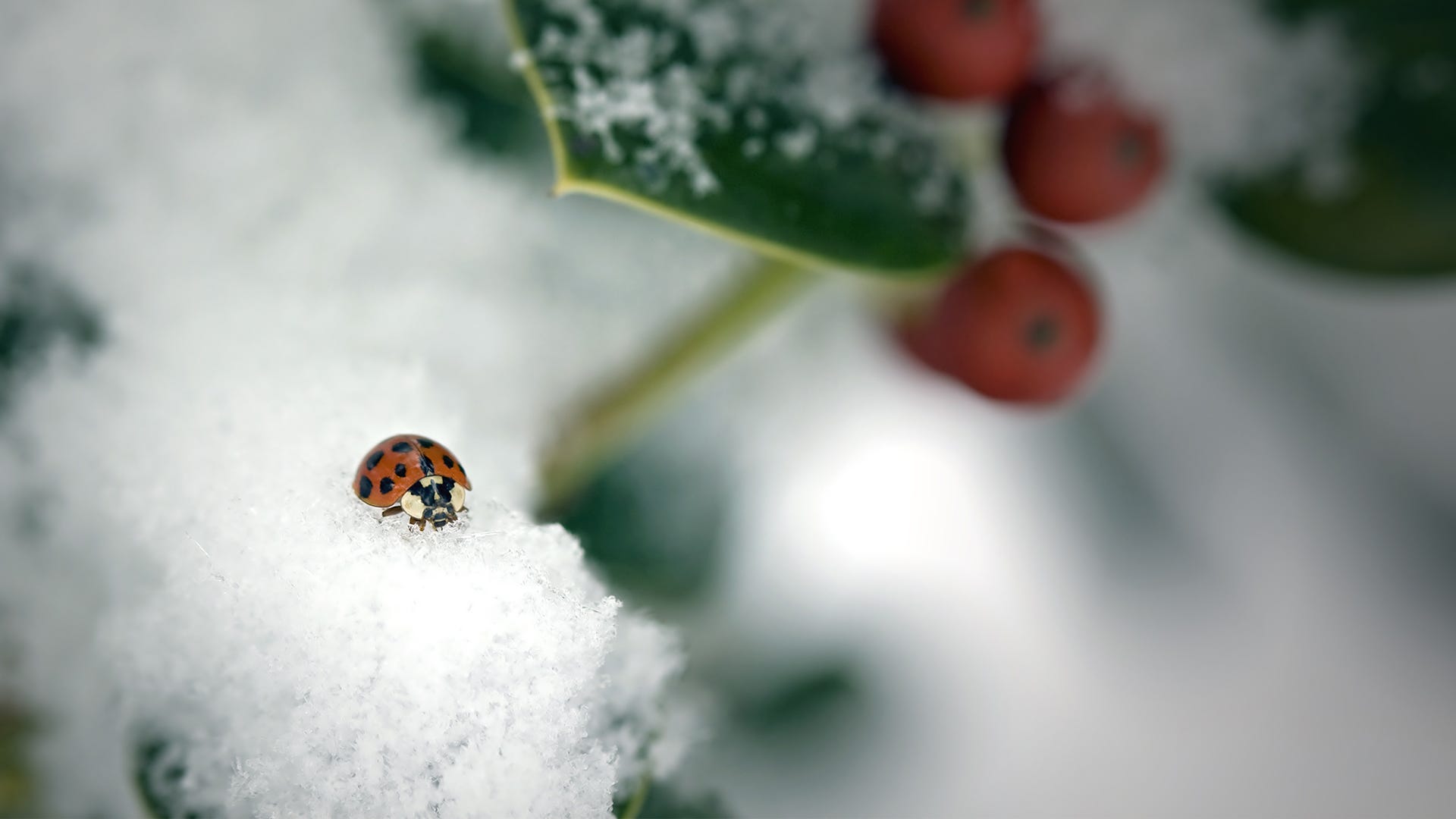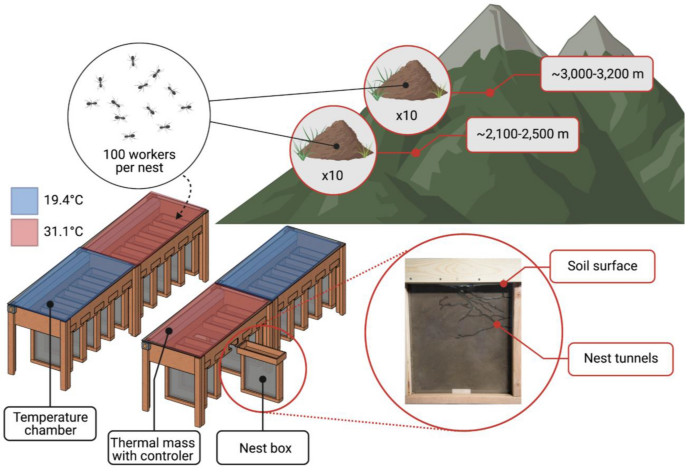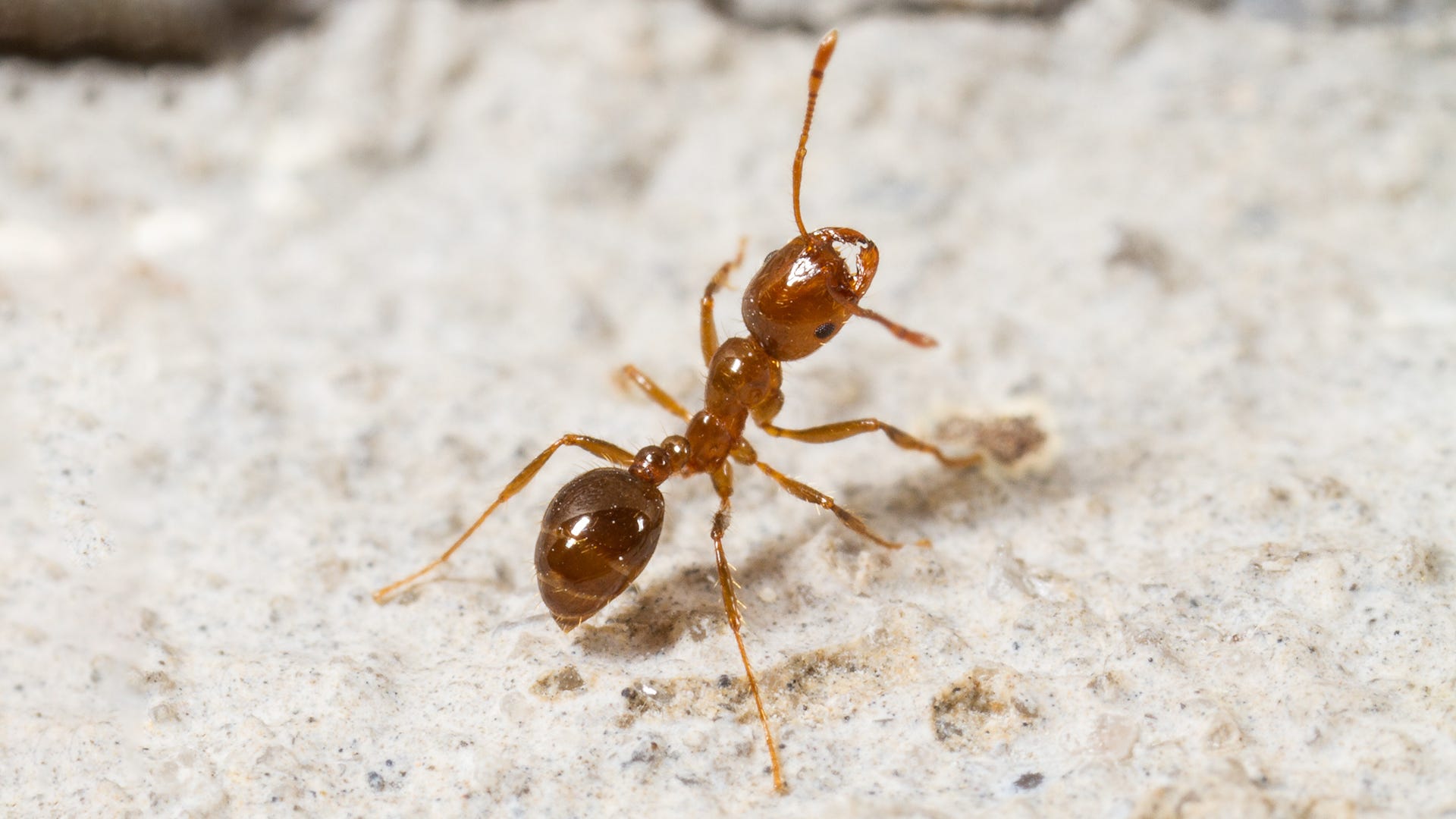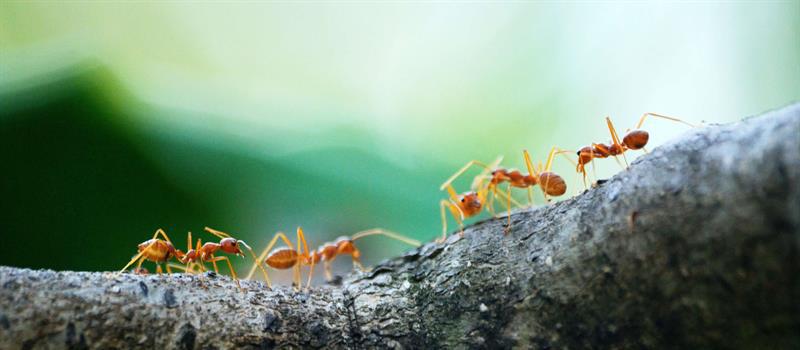Weather significantly impacts ants, influencing their behavior and lifecycle. Extreme conditions can disrupt their activities and colony dynamics.
Ants are remarkably adaptable creatures, thriving in diverse climates around the globe, from rainforests to deserts. Their ability to adjust to various weather patterns is a testament to their evolutionary success. Still, weather changes can play a pivotal role in their daily routines.
For instance, rain can flood ant tunnels and force evacuations, while excessive heat might prompt ants to retreat to cooler nest areas or adjust their foraging times. Cold weather often leads them to hibernate or slow down their activities significantly. Ants rely on environmental cues for many aspects of their behavior, including foraging, mating flights, and colony expansion. Therefore, understanding how weather affects ants is crucial for comprehending their interactions with the ecosystem and for effectively managing their presence in human habitations and agricultural settings.
Introduction To Ants And Their Environment
Have you ever wondered if ants care about the weather? These tiny creatures live complex lives, deeply connected to their surroundings. Let’s dive into the fascinating world of ants and how weather plays a crucial role in their daily existence.
The Life Of Ants
Ants are social insects, meaning they live in large colonies. Each ant has a role that contributes to the survival and success of their community. From queens laying eggs to workers gathering food, every ant is essential.
- Queens are the heart of the colony, responsible for reproduction.
- Workers forage for food, care for the young, and protect the nest.
- Soldiers defend the colony with strength and determination.
Weather can impact all these roles, from changing foraging habits to affecting the growth of the colony.
Ant Habitats
Ants build homes that suit their environmental needs. These habitats range from underground nests to trees. Every species adapts to its habitat, but certain weather conditions can be challenging.
| Ant Type | Preferred Habitat |
|---|---|
| Wood Ants | Decaying logs and trees |
| Army Ants | Temporary nests during migration |
| Leafcutter Ants | Underground with leaves for farming fungi |
Extreme temperatures, heavy rainfall, or drought can disrupt these habitats, affecting ants’ wellbeing. It’s a clear sign that ants are not just inhabitants but also are vulnerable to environmental changes.
Temperature’s Role In Ant Behavior
Temperature’s impact on ant behavior reveals a fascinating aspect of nature’s complexity. Ants are ectotherms, meaning their body temperature aligns with their environment. This trait influences their daily activities, lifecycle, and survival tactics, making temperature a pivotal factor in ant ecology.
Ant Activity During Different Temperatures
Temperature swings guide ant routines. Warmth encourages foraging, while extreme temperatures impose lifestyle shifts.
- Cool conditions: Activity slows down as metabolism drops.
- Moderate warmth: Ideal for foraging, building, and reproduction.
- High heat: Ants often retreat to cooler nest areas or forage during cooler periods.
Survival Adaptations To Extreme Heat And Cold
Ants have developed remarkable adaptations to survive temperature extremes.
| Situation | Adaptation |
|---|---|
| Extreme Heat | Nest design regulates temperature. Behavior shifts to nocturnal activities. |
| Intense Cold | Antifreeze compounds prevent ice formation within their bodies. |
In torrid climates, ants often construct deep, insulated nests or employ reflective materials at the surface. Subterranean chambers maintain stable conditions.
Cold environments see ants entering a state of dormancy called diapause, significantly reducing their metabolic needs. Their communal living provides additional warmth and protection.
Rainfall And Ant Colonies
Ants are tiny but mighty creatures, and their lives are more linked to the weather than we may think. One element that plays a huge role in the lives of ants is rainfall. It influences their behavior, their daily routines, and even the structure of their homes. Let’s dive into how rain impacts these fascinating insects and the innovative ways they cope with a wet world.
Impact Of Rain On Ant Nests
Rain can spell trouble for ant colonies. Heavy showers have the power to flood nests, forcing ants to take emergency action. Ant nests feature intricate tunnels and chambers that provide shelter and space for food storage and larvae. When it rains, these constructions can become waterlogged, which might lead to a collapse.
- Wet Soil: Softens and makes tunnels more prone to caving in
- Blocked Entrances: Mud and debris can seal off nest openings
- Nest Hygiene: Excessive moisture raises the risk of fungal growth
Flood Avoidance Techniques
Ants are survival experts and have evolved several strategies to prevent nest flooding. During wetter months, they may relocate or modify their homes to stay dry.
| Technique | Description |
|---|---|
| Nest Relocation | Moving to higher, drier ground |
| Elevation | Building mounds to rise above water levels |
| Ditch Construction | Creating channels to divert water |
| Waterproofing | Applying soil and leaves to fortify nests |
Some species can even form a living raft with their bodies, staying afloat until they find dry land. It’s clear that ants are well-equipped to handle the challenges posed by rainfall, turning potential disaster into a display of resilience.
Humidity And Its Effects On Ant Life
Did you know that humidity plays a vital role in ant life? Just as we need certain conditions to thrive, ants do too. Humidity, or the amount of moisture in the air, can greatly influence an ant’s survival and behavior. Let’s explore the fascinating world of ants and how varying levels of humidity impact these tiny creatures.
Ant Survival In Varying Humidity Levels
Ants are quite adaptable, but extreme humidity levels can test their limits. When it’s too dry, ants struggle to maintain moisture within their bodies and colonies. Too much moisture, however, places them at risk of fungal infections, which can threaten the colony’s health.
- Low humidity may lead to dehydration and reduce ant activity.
- High humidity can cause fungal growth, affecting ants and their larvae.
- Ants change location in response to these challenges, seeking optimal moisture conditions.
Preferential Humidity Conditions For Ants
Ants prefer a balanced environment where the humidity is just right. This equilibrium allows them to keep their colony successful and their brood healthy. Each species of ant has its own preferred humidity range that helps them thrive.
| Ant Species | Preferred Humidity Range |
|---|---|
| Carpenter Ants | High humidity, around 90-95% |
| Desert Ants | Low humidity, below 30% |
| Leaf-cutter Ants | Moderate humidity, about 60-80% |
The right level of humidity is crucial for ant eggs to hatch and larvae to grow. Workers tirelessly adjust humidity, venturing to wetter or drier areas as needed.
Ants During The Winter Season
As temperatures drop, ants transform their behaviors to survive the harsh climate. People often wonder, do ants hibernate, or where do these tiny creatures go when snow covers the ground? Let’s dig into the winter life of ants.
Hibernation And Ant Activity
Ants enter a state called diapause, similar to hibernation, during winter. Instead of foraging and expanding, they focus on survival.
- Their metabolism slows down, reducing their need for food.
- Ant activity becomes minimal to conserve energy.
- Nests are sealed off to maintain a stable, warm environment.
Worker ants gather food and insulate the nest as winter approaches. The queen lies in the nest’s deepest chamber, protected and slowed down, yet alive.
Changes In Ant Colony Dynamics
The structure of the ant colony adapts to the seasonal shift.
- Reproduction pauses until spring, focusing resources on existing members.
- Worker numbers may reduce, as food scarcity and cold take a toll.
- Social interactions within the colony decrease, limiting energy expenditure.
| Season | Colony Focus | Energy Use |
|---|---|---|
| Winter | Survival | Minimal |
| Other Seasons | Growth | High |
While we cozy up indoors, ants are masters at adapting to the colder season. Understanding their winter behavior reveals the complexity of these tiny creatures.

Credit: www.terro.com
Barometric Pressure Changes
Barometric pressure, or air pressure, is a subtle yet powerful force that quietly orchestrates the activities of the insect world, particularly ants. These tiny creatures are highly sensitive to environmental changes. Exploring how barometric pressure influences ant behavior unveils a fascinating aspect of nature. Let’s delve deep into the world of ants and atmospheric pressure.
Ant Behavior And Air Pressure
Ants are extraordinary animals. Their bodies respond to even the slightest changes in air pressure. Before a storm, when air pressure drops, ants often react in remarkable ways. Their hustle and bustle might either accelerate or slow down, depending on the species.
- Increased activity: Some species scramble to secure their nests against impending rain.
- Less wandering: Others reduce foraging to protect themselves from the elements.
These behaviors are crucial for an ant colony’s survival. They have evolved to respond quickly to the natural warning signals of weather shifts.
The Science Behind Ants Predicting Weather
Curious minds have long observed ants as weather predictors. There’s a scientific basis for this belief. The antennas of ants are highly sensitive to their environment. They can detect minor changes in barometric pressure.
| Pressure Change | Ant Reaction | Predicted Weather |
|---|---|---|
| Drop in pressure | Rapid nest preparation | Storm approaching |
| Rise in pressure | Resumption of foraging | Clearer skies |
Research hints that ants use this ability to stay ahead of weather changes. They adjust their foraging and nest-maintenance accordingly. These behaviors help the colony avoid danger and take advantage of favorable conditions.
Drought Conditions And Ant Populations
Have you ever wondered how weather, especially dry spells, affects ants? Drought conditions can have a big impact on these tiny critters. Let’s dig into how lack of water changes the life of an ant colony.
Effects Of Drought On Foraging And Food Supply
Dry weather means tough times for ants. Their hunt for food gets harder. Plants and insects, which ants eat, become scarce.
- Less plant secretion: Plants dry up and give out less nectar.
- Scarce prey: Fewer bugs around for ants to feed on.
- Hard soil: Ground becomes too tough for ants to dig through.
With food and moisture hard to find, ants have to travel farther. These tiny adventurers must face the fierce sun and predators on the prowl.
Adaptations To Water Scarcity
Ants are survivors. Even during dry times, they adapt to stay alive. Let’s see how they manage without much water.
| Adaptation | Description |
|---|---|
| Deep digging | Ants make their homes deeper to reach moist soil. |
| Storing food | They keep food in their nest to use during drought. |
| Night shifts | Working at night to avoid the heat saves water. |
| Body adaptation | Ants can absorb water from the food they eat. |
Some ants have special body parts to suck up water. Others can slow their bodies down to save water. This shows how clever ants can be!

Credit: www.nature.com
Climate Change And Ant Ecosystems
Our little six-legged friends, ants, live closely with their environment. They feel every whisper of climate change. This brings big changes to their world. Scientists watch ants to understand these changes.
Long-term Impacts On Ant Diversity
Ant diversity tells us much about our planet’s health. Over many years, changing climates shift where ants can live. Some areas become too hot or too cold. This leads to:
- Fewer kinds of ants in certain regions.
- New ant species in places that were once too harsh.
- Altered ecosystems due to the changing ant populations.
Different ants have different roles, like seed dispersal or soil aeration. Losing these roles hurts the environment.
Ants As Bio-indicators Of Environmental Health
Ants are bio-indicators. This means they show how healthy an environment is. By observing ants, experts can see:
| Ant Behavior | Environmental Clue |
|---|---|
| Changing nesting sites | Shifts in local climates |
| Varying population sizes | Quality of available resources |
| New species arriving | Altered habitats inviting newcomers |
This table shows that ant actions signal changes in our weather and ecosystems.
Case Studies: Ant Behavior In Extreme Weather Events
Ants are tiny creatures, but they show amazing resilience against the elements. Scientists study how ants respond to weather extremes to understand their survival strategies. Let’s explore the remarkable ways ants adapt through case studies focusing on extreme weather events.
Observations From Natural Disasters
Ants face many challenges during natural disasters.
- Floods: Ant colonies can float to survive water inundation.
- Storms: Ants rebuild quickly after their nests are destroyed.
- Heatwaves: Some ants dig deeper tunnels for cooler temperatures.
One notable observation is the ant rafts during floods. Ants lock their bodies together, creating rafts to protect the queen and larvae. This cooperation is crucial for their survival.
Research Findings On Ant Resilience
Research highlights the ant’s ability to withstand extreme conditions. Studies show:
| Weather Event | Ant Response |
|---|---|
| Droughts | Ants adjust foraging times and behavior to conserve water. |
| Extreme Cold | Ants cluster together, share warmth, and reduce activity. |
| High Winds | Ants stay closer to the ground and reinforce nest entrances. |
Through research, we learned that ants have strong survival instincts. They make quick changes to outlast harsh weather. This shows the incredible flexibility and adaptability of these small creatures.
Ant Control And Weather Conditions
Ants are clever creatures, bustling with activity and always on the hunt for their next feast. Yet, their behavior changes with the weather. Understanding the impact of weather conditions on ants is key to keeping them at bay.
Best Practices In Ant Management
Win the battle against ants with effective strategies that take the upper hand.
- Maintain cleanliness: Wipe up spills immediately. Ensure food is stored securely.
- Seal entry points: Cracks in walls and foundations invite ants inside.
- Landscaping: Trim trees and bushes away from your home. This helps prevent ant highways.
- Bait stations: Use these as a targeted approach to eliminate the colony.
- Professional help: When infestations grow, experts can provide the best solutions.
Seasonal Considerations For Homeowners
Each season presents unique challenges for ant control. Stay one step ahead with timely action.
| Season | Ant Activity | Action Steps |
|---|---|---|
| Spring | Ants emerge, seeking food. | Begin regular perimeter treatments and monitor for early signs of invasion. |
| Summer | Ant numbers peak. | Enhance your focus on outdoor ant control and maintain a clean kitchen. |
| Fall | Ants prepare for winter. | Seal your home and clean up any debris that might offer shelter for ants. |
| Winter | Ants are less active but may seek warmth. | Continue to seal cracks and keep indoor areas dry and free of food particles. |
Conclusion: The Interconnectedness Of Ants And Weather
Ants are more than just tiny creatures underfoot; they play a vital role in ecosystems. Their behavior links closely to weather patterns. This affects both ecology and human concerns like pest control. Let’s delve into the key points and their wider significance.
Summary Of Key Findings
- Temperature impacts ant activity: Warmer conditions increase foraging and colony expansion.
- Rainfall influences nesting: Ants adapt their nests in response to moisture levels.
- Extreme events disrupt ant life: Floods and droughts can reduce ant populations significantly.
Implications For Ecology And Pest Control
Understanding the dynamics between ants and weather leads to insights for ecological study and practical pest management. Below are the key takeaways:
| Ecological Insight | Pest Control Strategy |
|---|---|
| Ants as bioindicators reveal health of ecosystems. | Timing pest control measures with weather changes. |
| Ant engineering modifies soil properties. | Adapting control methods for different seasons. |
| Food web dynamics altered by ant population shifts. | Employing more sustainable, ecologically informed practices. |

Credit: www.terro.com
Frequently Asked Questions For Does Weather Affect Ants?
How Does Rain Impact Ant Behavior?
Rain can significantly disrupt ant activities. They become less active and focus on protecting their nests from flooding. Some species build waterproof nests or relocate temporarily to avoid water damage.
Can Ants Survive In Cold Weather?
Ants are less active in cold weather and many species hibernate. They retreat to their nests, relying on stored food and their collective body heat to survive until temperatures rise.
Do Ants Forage More In Hot Temperatures?
Heat increases ant activity. They forage more aggressively to gather food but must also avoid overheating. Some species adjust their schedules, foraging during cooler hours.
How Do Ants Adapt To Seasonal Weather Changes?
Ants adapt by adjusting their behaviors, such as changing foraging times, migrating deeper into the ground, or altering nest structures to cope with temperature and humidity variations.
Conclusion
Understanding the impact of weather on ants is fascinating. These tiny creatures adapt remarkably to environmental changes. Rain or shine, ants show resilience and resourcefulness. They thrive across climates by altering their behavior. This insight not only feeds our curiosity but aids in better ant control strategies.
Keep observing; nature has endless lessons in store.

I’m MD Tanvir, and I bring years of expertise gained from working closely with pest control companies to the forefront. My journey in the industry has inspired me to launch Bug Battler, a platform aimed at equipping people with the know-how to combat pests autonomously. Through Bug Battler, I aim to empower individuals with practical insights to tackle pest infestations effectively.

